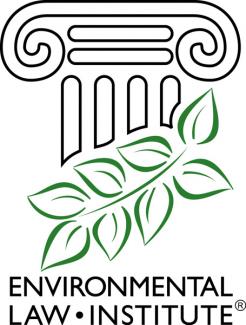The conference at Airlie House in September 1969 produced the Environmental Law Institute and Law and the Environment, a book of the papers presented at the meeting. Though published by one of ELI’s fiscal sponsors, it demonstrates that from its very beginning, ELI was at the forefront of environmental law. ELI and the American Law Institute began their collaboration educating attorneys about environmental law in 1970. The first issue of the Environmental Law Reporter (January 1971) included a primer on environmental law by one of ELI’s founders, James Moorman, that in just 33 pages provides a comprehensive guide to environmental law that would serve well today as an outline of the subject. In 1974, ELI produced, with West Publishing, Federal Environmental Law, the first legal treatise on the subject. These early efforts established two hallmarks of ELI: working with partners and leading development of environmental law.

ELI’s first research report, “NEPA and the Courts: A Legal Analysis of the National Environmental Policy Act,” both established ELI’s leadership on the law of NEPA, but also its penchant for long titles with subtitles. One of ELI’s other early research projects was on wetlands, establishing its role as a leading authority on wetlands law that continues to this day.
I joined ELI 35 years ago, so have experienced two thirds of its existence, and thus have had the honor of working with the majority of the universally amazing people who have worked here. In the late 1980s, when I started to analyze how institutional controls were being used at contaminated sites, Elissa Parker, longtime head of Research & Policy, pointed me to a report ELI had done in the 1970s on how institutional controls worked and didn’t. The research I did along with James McElfish and others illustrated how and why institutional controls function and why redundant systems are needed. EPA, the departments of Defense and Energy, and many states have since adopted the measures ELI and a few others recommended. A similar process occurred with ELI’s work analyzing state cleanup and brownfields programs, which led to improvements in EPA’s policies and state rules. The District of Columbia environment division then asked Linda Breggin and me to draft a brownfields law, which it succeeded in convincing the D.C. council to enact.
In the late 1990s, as Kuwait was recovering from the Iraqi invasion, it asked its U.S. attorneys who might be able to convene a conference to analyze the legal issues related to environmental damage caused by the war. Those attorneys recommended ELI. Attorneys Jay Austin and Carl Bruch, with the assistance of many others, convened the first conference on the environmental consequences of war, headlined by two Nobel Peace Prize laureates, Mikhail Gorbachev and Oscar Arias. The papers presented there became a treatise of that name.
Carl has continued in related work, editing six books on post-conflict natural resource management, along with now Vice President Sandra Thiam and Senior Attorney Jessica Troell and others. Carl followed that by creating the field of environmental peacebuilding and a separate organization devoted to that work. Carl is now being consulted about how to plan for dealing with the environmental consequences of Russia’s invasion of Ukraine.
Jessica has similarly been a leader in establishing the new field of water tenure and women’s rights to water. In conjunction with that effort, Jessica began work with a woman then at the Swedish International Water Institute who was leading a program to build the capacity of female leaders in water diplomacy. Elizabeth Koch has since joined ELI and is now leading a global network of women in water diplomacy.
Another story has been told many times: in his acceptance speech for ELI’s 1989 Annual Award, Judge James L. Oakes challenged ELI and the environmental bar to educate judges about environmental law. ELI’s president, J. Willliam Futrell, started that process before the dishes were cleared. We gave our first lectures to federal judges in 1990 and held our first course for judges from the New England states in 1991. The program expanded to become global in scope. ELI is currently partnering with the Federal Judicial Center, the National Judicial College, and others to educate judges about the science of climate change.
As I write this, the U.S. Supreme Court’s decision in Sackett v. EPA has brought attention to ELI’s long-standing expertise in wetlands law. The decision raised the question in many minds of what protections might exist in state laws. Of course, ELI has that information already compiled in a September 2022 ELR article authored by Jim McElfish and a just-released Research Report, Filling the Gaps, by Wetlands Program Director Rebecca Kihslinger and Heather Luedke.
ELI began its existence as a thought leader in environmental law, has been one through half a century, and due to its incredibly talented staff continues to demonstrate what that means on an ongoing basis.
This blog originally appeared in the July/August 2023 The Environmental Forum and is reprinted with permission. John "Jay" Pendergrass retires on July 7, 2023, after 35 years at the Institute. Among his myriad accomplishments at ELI, John was the original columnist for Around the States, a popular column of The Environmental Forum which continues today. Read the inaugural column here.
